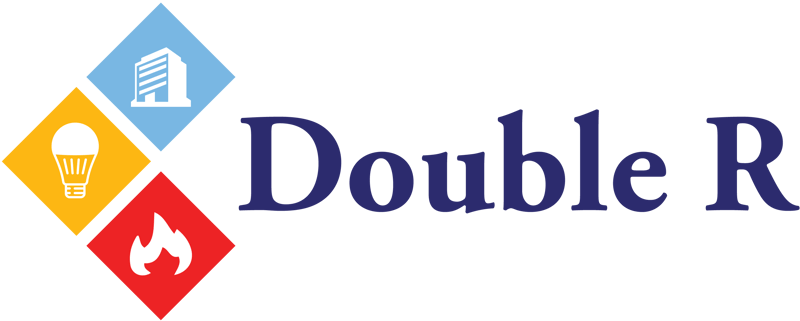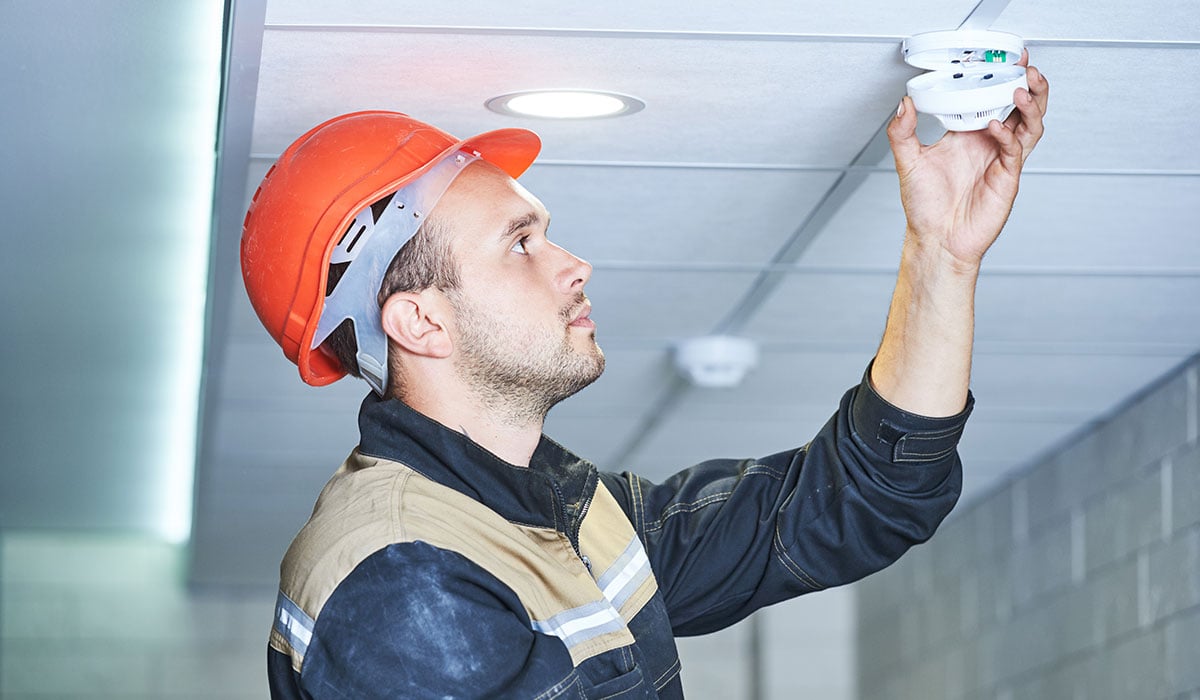Too often, faulty smoke detectors, manual pull stations, water flow devices, notification devices—including strobes, horn strobes, and bells—and other fire alarm violations prevent life safety systems from detecting the needed situation and ushering staff and patrons to safety.
To proactively mitigate these risks—and stay compliant with local and national township requirements—building owners and/or property managers should make it a priority to thoroughly inspect and maintain systems.
Not only does this keep your property aligned with fire code, but it optimizes your safety posture and protects everyone as much as possible in the event of an emergency.
Common Fire Alarm Violations & How to Avoid Them
To protect compliance and safety, Double R’s experienced contractors highlight four common fire alarm violations property managers frequently run into, and the codes behind them.
Faulty Smoke Detectors
First and foremost, fire alarms must be operational. If not, they won’t detect smoke and alert staff for a timely evacuation from the premises.
In fact, for a business to even occupy a building in New York State, all fire alarms, detectors, and suppression systems must be tested and approved, reads the state's fire code.
Property managers must also maintain and update emergency alarms and smoke and heating vents at all times, and properly replace them when defective.
Obstructed Notification Devices & Fire Alarm Pulls
Without clear access to fire alarm pulls and notification devices, staff members are unable to manually alert others of danger, or potentially extinguish small fires before the blaze becomes more severe.
The NFPA 101 Life Safety Code requires at least one fire alarm pull station within every building, located within 60 inches of an individual exit. Property managers should also ensure fire alarm pulls are completely unobstructed by desks, doors, plants, and other barriers that hinder swift emergency signaling and evacuation.
Non-Illuminated or Faulty Lighting & Exit Signs
Especially amid a thick layer of smoke, properly illuminated exit signs and emergency lighting can be the difference between the ability to locate a safe evacuation route.
Swift exit in an emergency depends on a well-lit exit sign plainly legible with block letters and arrows corresponding to the direction of the exit, according to New York State code.
Signs should be no less than 6 inches high with three-quarter inch-wide strokes, and properly illuminated with an emergency lighting system—preferably LEDs, which operate more consistently and efficiently than incandescent bulbs.
Lack of Proper Records
After property managers complete their yearly inspection and any required maintenance, the work is still not completely finished; additionally, they must keep thorough records of inspection, maintenance, and tests to be fully compliant with state fire code.
Within these accounts, business owners should include the name of the hired contractor, any new components installed and their manufacturer, and location and quantity of components on each floor, along with any operation and instruction manuals.
These comprehensive documents prove the company’s due diligence and fire safety compliance.
Fire Alarm Inspections & Maintenance
To avoid these violations and others—and the substantial safety risks that accompany noncompliance—it is prudent commercial property enlist the services of skilled professionals to provide thorough inspections, maintenance, and updates once per year.
During the detailed inspection process, contractors should evaluate most—if not all—of the following items:
- Annunciator Inspection
- Audio/Visual Device Testing
- Bell Testing
- Control Panel Inspection
- Door Holder Testing
- Duct Detector Testing
- Elevator Recall Testing
- Flow Switch Testing
- Ground Fault Detection Circuitry Testing
- Grounded Field Wiring Testing
- Monitoring Connection Verification
- Pull Station Testing
- Smoke Detector Cleaning (Every Six Months in the New York Metro Area)
- Smoke Detector Sensitivity Testing (Every Two Years)
- Standby Battery Load Testing
- Supply & Completion of NYFD-Required Alarm Log or Maintenance Book
- Supply & Completion of Required Inspection Forms
- Tamper Switch Testing
- Thermal Detectors Testing
Dedicated inspection and maintenance of these areas not only validate your fire alarm systems are up to date, compliant, and safe, but empower you to strengthen your incident response capabilities in the event of an emergency.
Ensure Systems Function Optimally When They’re Needed Most
Of the 125,500 non-residential fires (including public assembly spaces, stores, and offices) reported in 2021, there were 130 civilian deaths, 1,100 injuries, and nearly $3.6 billion in damages, reads a report from the National Fire Protection Association® (NFPA).
To avoid being part of these statistics, it is best practice that commercial property managers partner with industry professionals for inspections, maintenance, and installations of critical systems.
Whether updating emergency lighting or inspecting smoke detectors, Double R’s experienced staff has decades of experience to ensure your systems are compliant and operational.
In a thorough inspection process, Double R evaluates all the aforementioned areas—from annunciator inspection to thermal detector testing—so your fire alarms perform optimally, especially when you need them most.
From fire alarm systems and card access entry to LED efficiency lighting and carbon monoxide detectors, Double R’s one-stop shop for updates and installation is committed to empowering your businesses to function as safely as possible, at all times.
With 30 years of industry experience, Double R has been trusted to install and maintain fire protection systems in commercial, industrial, and retail locations across the Northeast. To learn more about optimizing your systems today, contact us.


